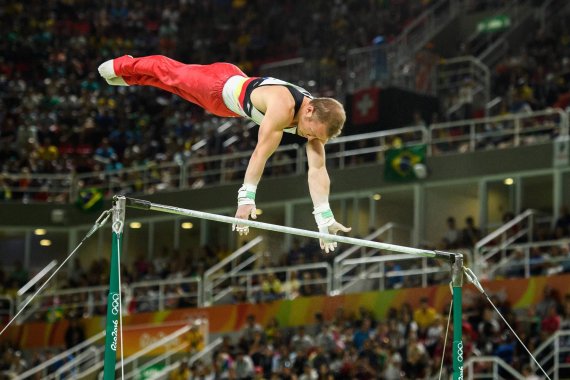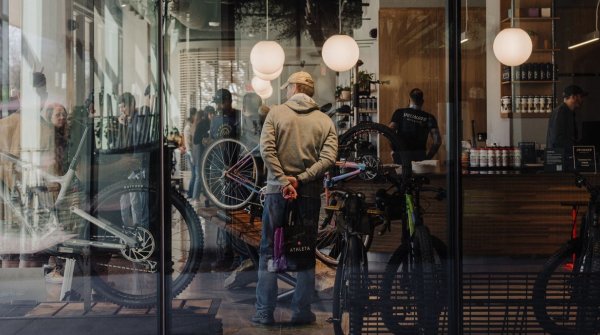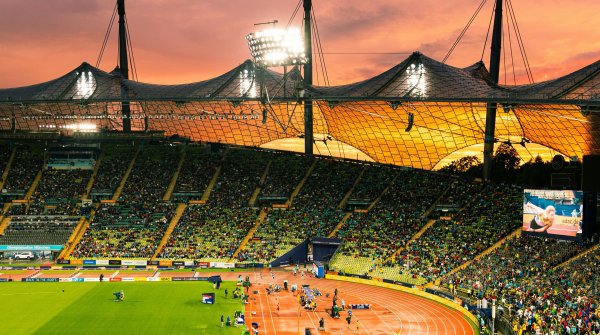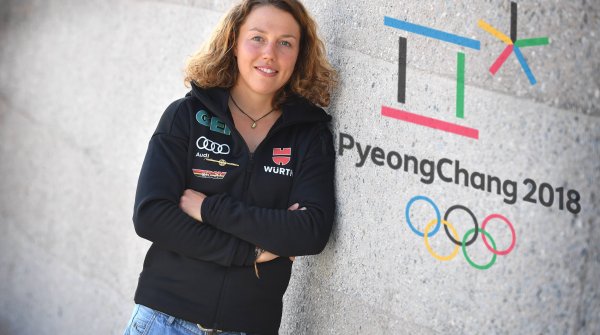
The idea came to Fabian Hambüchen spontaneously when, after the first marathon of interviews, he came back one more time to the sports hall. Hambüchen wanted to photograph the gold high bar with his phone camera after his Olympic victory, when a thought came to him out of nowhere: “Hey man, you have to buy this thing! It would be stupid to leave it standing here.”
That’s how the 28-year-old gymnast tells the story Wednesday night at the exuberant celebration in the German house. The gold high bar is to go back to Germany, specifically to the training hall in Wetzlar.
Read more exciting articles on the sports business in Rio here!
High bar manufacturer Spieth Gymnastics produces in Altbach
Hambüchen didn't have to beg long and the owner without further ado decided to make a present out of it. The gold high bar doesn’t actually belong to the Olympic organizer Rio, but to the manufacturer, Spieth Gymnastics GmbH, that not so long ago shifted its location in the Greater Stuttgart area by a couple of kilometers, from Esslingen to Altbach.
"When our boss heard about Mr. Hambüchens wish he abruptly decided to make a present out of it", says Jeanette Grau, Spieth Marketing Manager for Germany, Austria and Switzerland, "we have known Mr. Hambüchen for a long time. The gold high bar is present to acknowledge his brilliant success for this sport."
Hambüchen: "It will be a highlight"
Fabian Hambüchen is "obviously very excited. This is a nice gesture. It is a dream to get it as a present and delivered straight to my doorstep. It will be a highlight to put up in our hall", says the Olympic winner.
The traditional Swabian company with 30 employees and a yearly revenue of about eight million euros was founded in 1831 as a carpenter’s workshop, and has been supplying Reuther springboards to the Olympics since 1956 in Melbourne. At the beginning of the 00s, Spieth Gymnastics was sold to the Netherlands-based JF Group.
Spieth Gymnastics supplied sports devices in the value of about two million euros to Brazil for the 2016 Summer Olympic Games in Rio. For a start, as a loan. “Actually, the agreement with the Brazilian government was that they would purchase all of the devices in the aftermath,” Chief Executive Henning Hauser told the “Deutsche Welle” before the Games.
What makes Hambüchen’s gold high bar so expensive
Hambüchen believed that his idea will cost him “about five grand, so still manageable.” 5000 euros? For the high bar used at the Olympic competition in Rio (“Stuttgart edition,” because it was first used at the World Artistic Gymnastics Championships in 2007), Spieth usually asks for about 2400 euros. Including sales tax.
But the logistical and transportation costs from Brazil to Germany would likely double the normal price.
Rio high bar is a special edition
For Hambüchen, who’s getting 20,000 euros as a reward from the Deutsche Sporthilfe for his Olympic victory alone, it probably wouldn't have been a life-threatening investment. “The Olympic Rings are on the posts and I’m going to put my autograph on them, then it’s a one of a kind,” says Fabian Hambüchen.
The Rio high bar is a special edition in any case. That's because it’s usually supplied in silver, but the organizers for the 2016 wanted a special varnish: in green. The Olympic rings and the white “Rio 2016” logo were only applied once on site.
Good thing Hambüchen isn’t a floor gymnast: The sprung floor supplied to Rio by Spieth Gymnastics (twelve steel springs per square meter) costs around 40,000 euros – Spieth probably wouldn't have given that to him so easily.
 Sports BusinessThe future of the bike industry: 6 innovative bike stores
Sports BusinessThe future of the bike industry: 6 innovative bike stores
- ISPO awards
- Mountain sports
- Bike
- Design
- Retail
- Fitness
- Health
- ISPO Job Market
- ISPO Munich
- ISPO Shanghai
- Running
- Brands
- Sustainability
- Olympia
- OutDoor
- Promotion
- Sports Business
- ISPO Textrends
- Triathlon
- Water sports
- Winter sports
- eSports
- SportsTech
- OutDoor by ISPO
- Heroes
- Transformation
- Sport Fashion
- Urban Culture
- Challenges of a CEO
- Trade fairs
- Sports
- Find the Balance
- Product reviews
- Newsletter Exclusive Area
- Magazine




